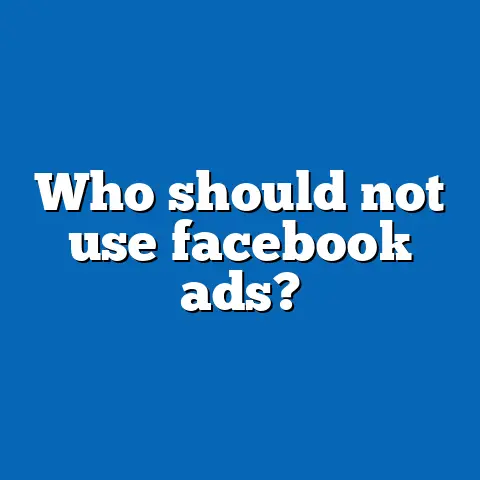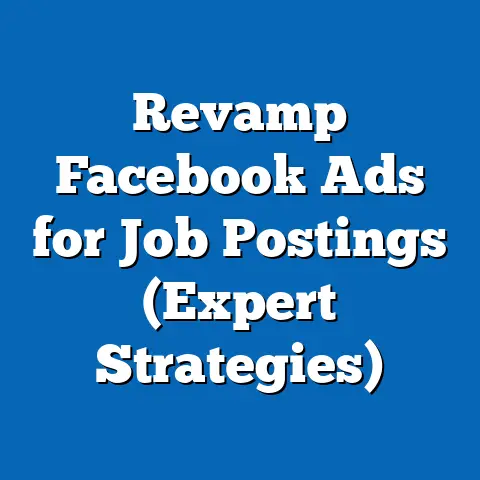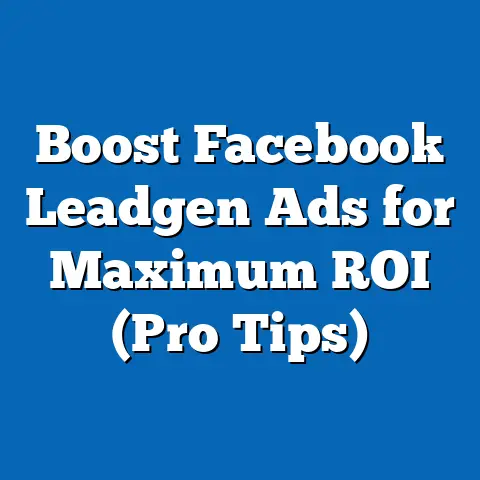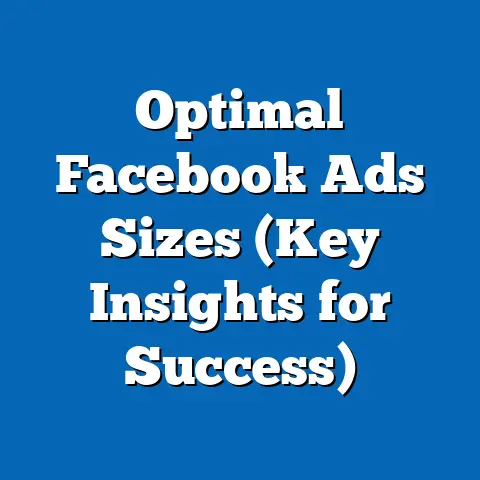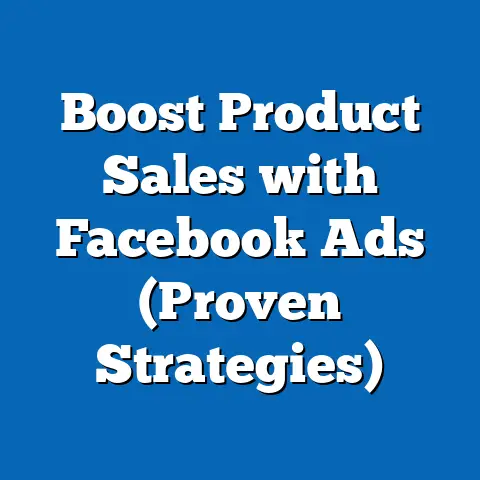Revive Idle Facebook Ad Strategy (Boost Engagement Tips)
Facebook. It’s the digital town square, the place where billions connect, share, and discover. And for businesses, it’s a goldmine of potential customers. But, like any goldmine, you need the right tools and strategy to extract the value. I’ve seen countless businesses invest in Facebook ads, only to let their strategies stagnate, resulting in wasted ad spend and missed opportunities. The digital landscape is a constantly shifting terrain. What worked six months ago might be as effective as a rotary phone in the age of smartphones. That’s why now is the perfect time to breathe new life into your Facebook ad strategy and unlock a fresh wave of engagement and conversions.
I’ve personally witnessed the transformation that a well-revived Facebook ad campaign can bring. I recall working with a local bakery that had seen their online sales plateau. Their initial Facebook ads, which featured basic product photos and generic descriptions, had lost their spark. By diving deep into their customer data, refreshing their creative assets with mouth-watering videos, and implementing a targeted retargeting strategy, we were able to increase their online orders by 40% in just one month! This is just one example of how a proactive approach to Facebook advertising can yield significant results.
Understanding the Current Landscape of Facebook Ads
The world of Facebook advertising is in constant flux. To effectively revive your idle strategy, you need to understand the current rules of the game.
Algorithm Updates: Facebook’s algorithm, the mysterious force that determines what users see in their newsfeeds, is constantly being tweaked. These updates can significantly impact the reach and engagement of your ads. For example, in recent years, Facebook has prioritized content from friends and family over branded content, making it harder for businesses to organically reach their audience. This means your ads need to be even more compelling and relevant to cut through the noise.
Ad Format Evolution: Facebook is always experimenting with new ad formats. The rise of short-form video, interactive ads, and augmented reality experiences has opened up new avenues for engaging with users. Staying on top of these trends and experimenting with different formats is crucial for keeping your ads fresh and exciting.
User Behavior Shifts: Consumer behavior on Facebook is also evolving. People are increasingly using the platform for discovery, research, and community building. This means your ads need to cater to these needs by providing valuable information, fostering conversations, and building relationships.
The Post-Pandemic Pivot: The pandemic dramatically shifted consumer habits, accelerating the adoption of digital channels. Even as the world returns to a new normal, many of these changes are here to stay. Consumers are now more comfortable making purchases online, and they expect seamless and personalized experiences. Your Facebook ads need to reflect this by offering convenience, value, and a human touch.
Adapting to Change: A Success Story: I remember working with an e-commerce client who was struggling to maintain their pre-pandemic sales levels. We realized that their existing ad campaigns were no longer resonating with their target audience. By analyzing their customer data and conducting market research, we discovered that their customers were now prioritizing sustainability and ethical sourcing. We revamped their ad creatives to highlight their eco-friendly practices and saw a significant increase in engagement and sales.
Takeaway: The Facebook advertising landscape is dynamic. Staying informed about algorithm updates, ad format evolution, user behavior shifts, and broader market trends is essential for reviving your idle strategy.
Identifying Your Target Audience
You can’t hit a target you can’t see. Precise audience targeting is the bedrock of any successful Facebook ad campaign. It’s about going beyond basic demographics and understanding the nuances of your ideal customer.
Leveraging Facebook’s Audience Insights: Facebook’s Audience Insights tool is a treasure trove of data about your potential customers. It allows you to gather information about their demographics, interests, behaviors, and even their purchase habits. By analyzing this data, you can gain a deeper understanding of who your target audience is and what motivates them.
Creating Audience Personas: Once you have a wealth of data, the next step is to create audience personas. These are fictional representations of your ideal customers, based on real data and insights. A well-defined persona includes details like their age, gender, location, occupation, interests, pain points, and online behaviors.
Understanding Pain Points and Desires: Knowing your audience’s pain points and desires is critical for crafting compelling ad copy and creative assets. What problems are they trying to solve? What aspirations do they have? Your ads should speak directly to these needs and offer solutions that resonate with them.
Segmenting for Tailored Campaigns: Not all customers are created equal. Segmenting your audience into smaller, more targeted groups allows you to create ad campaigns that are highly relevant and personalized. You can segment based on demographics, interests, behaviors, past purchases, or any other criteria that are relevant to your business.
A Personal Experience: I once worked with a fitness studio that was struggling to attract new members. Their initial ad campaigns targeted a broad audience of “people interested in fitness.” By using Facebook’s Audience Insights tool, we discovered that their most successful members were women aged 25-45 who were interested in yoga, healthy eating, and mindfulness. We created a new ad campaign specifically targeting this segment with messaging that emphasized the studio’s yoga classes, healthy meal plans, and meditation workshops. The result was a significant increase in new memberships.
Takeaway: Understanding your target audience is paramount. Use Facebook’s Audience Insights tool to gather data, create audience personas, understand their pain points and desires, and segment your audience for tailored campaigns.
Creative Ad Formats to Boost Engagement
In the attention economy, your ads need to stand out from the crowd. Facebook offers a variety of creative ad formats that can help you grab attention, tell your story, and drive engagement.
Video Ads: The King of Engagement: Video is the most engaging ad format on Facebook. It allows you to showcase your products or services in a dynamic and visually appealing way. Short, attention-grabbing videos tend to perform best, especially on mobile devices.
Carousel Ads: Showcasing Multiple Products or Features: Carousel ads allow you to display multiple images or videos in a single ad unit. This format is ideal for showcasing a range of products, highlighting different features of a single product, or telling a story in a sequential manner.
Stories Ads: Immersive and Authentic: Facebook Stories ads are full-screen, vertical videos or images that appear between users’ organic Stories. This format offers an immersive and authentic way to connect with your audience. Stories ads are particularly effective for reaching younger demographics.
Collection Ads: Seamless Shopping Experience: Collection ads are designed to provide a seamless shopping experience for users. This format combines a video or image with a selection of related products. When users click on a product, they are taken directly to your website or app to make a purchase.
Best Practices for Compelling Visuals: Regardless of the ad format you choose, your visuals need to be high-quality, eye-catching, and relevant to your target audience. Use bright colors, engaging imagery, and clear messaging. Make sure your visuals are optimized for mobile viewing.
My Experience with Video Ads: I remember working with a travel agency that was struggling to promote their tour packages. Their initial ad campaigns used static images of destinations, which didn’t capture the excitement and adventure of traveling. We created a series of short video ads that showcased the experiences of past travelers, highlighting the stunning scenery, delicious food, and cultural immersion. The video ads were a huge hit, resulting in a significant increase in bookings.
Takeaway: Experiment with different ad formats to find what resonates best with your target audience. Focus on creating compelling visuals that are optimized for mobile viewing.
Crafting Compelling Ad Copy
Great visuals are only half the battle. Your ad copy needs to be just as compelling to grab attention, convey your message, and drive action.
The Power of Storytelling: People are naturally drawn to stories. Use storytelling in your ads to create an emotional connection with your audience. Share customer testimonials, highlight the benefits of your products or services, or tell a personal story about your brand.
Clear Calls to Action (CTAs): Your ads should always include a clear call to action that tells users what you want them to do. Use action-oriented language like “Shop Now,” “Learn More,” or “Get Started.” Make your CTAs prominent and easy to click.
Testing Different Messaging Styles: Don’t be afraid to experiment with different messaging styles to see what resonates best with your audience. Try different tones, lengths, and value propositions. A/B test your ad copy to identify the most effective messaging.
A/B Testing in Action: I recently worked with an online clothing retailer that was running two different versions of the same ad. One version used a straightforward, informative tone, while the other used a more playful and humorous tone. After running the ads for a week, we found that the humorous version had a significantly higher click-through rate and conversion rate.
Takeaway: Craft compelling ad copy that tells a story, includes a clear call to action, and resonates with your target audience. A/B test different messaging styles to optimize your ad performance.
Leveraging Retargeting Strategies
Retargeting is like giving potential customers a gentle nudge back to your website or app. It’s a powerful way to re-engage people who have previously interacted with your brand but haven’t yet converted.
What is Retargeting? Retargeting involves showing ads to people who have visited your website, viewed your products, added items to their cart, or taken other specific actions. This allows you to reach a highly qualified audience who are already familiar with your brand.
Dynamic Ads: Dynamic ads are a type of retargeting ad that automatically shows users the specific products they viewed on your website. This personalized approach is highly effective for driving conversions.
Custom Audiences: Custom audiences allow you to target your existing customers with ads on Facebook. You can upload a list of your customer email addresses or phone numbers, and Facebook will match them to users on the platform. This allows you to reach your most loyal customers with special offers, new product announcements, or other relevant messaging.
Retargeting Success Story: I worked with an online bookstore that was struggling with a high cart abandonment rate. We implemented a retargeting strategy that showed users ads for the specific books they had left in their cart. The ads included a special discount code to incentivize them to complete their purchase. This retargeting campaign resulted in a significant decrease in cart abandonment and a boost in sales.
Takeaway: Retargeting is a crucial component of any successful Facebook ad strategy. Use dynamic ads and custom audiences to re-engage potential customers and drive conversions.
Analyzing Performance and Iterating
The final step in reviving your Facebook ad strategy is to monitor your performance, analyze your results, and iterate on your approach. This is an ongoing process that requires constant attention and optimization.
Key Performance Indicators (KPIs): Track key performance indicators (KPIs) like reach, impressions, click-through rate (CTR), conversion rate, and cost per acquisition (CPA). These metrics will give you insights into how your ads are performing and where you can make improvements.
Facebook Ads Manager and Third-Party Analytics: Use Facebook Ads Manager to track your ad performance and gain insights into your audience. Consider using third-party analytics tools to get a more comprehensive view of your data.
A/B Testing: A/B test different elements of your ads, such as your ad copy, visuals, targeting, and bidding strategy. This will help you identify what works best and optimize your ads for better engagement and conversions.
Takeaway: Monitor your ad performance, analyze your results, and iterate on your approach. A/B test different elements of your ads to optimize for better engagement and conversions.
Conclusion
Reviving your idle Facebook ad strategy is not a one-time fix, but an ongoing process of learning, adapting, and optimizing. By understanding the current landscape, identifying your target audience, using creative ad formats, crafting compelling ad copy, leveraging retargeting strategies, and analyzing your performance, you can unlock a new wave of engagement and conversions. Don’t be afraid to experiment, test new ideas, and learn from your mistakes. With the right approach, you can transform your Facebook ads from a stagnant investment into a thriving engine for growth. So, take the leap, implement these strategies, and watch your engagement soar!

